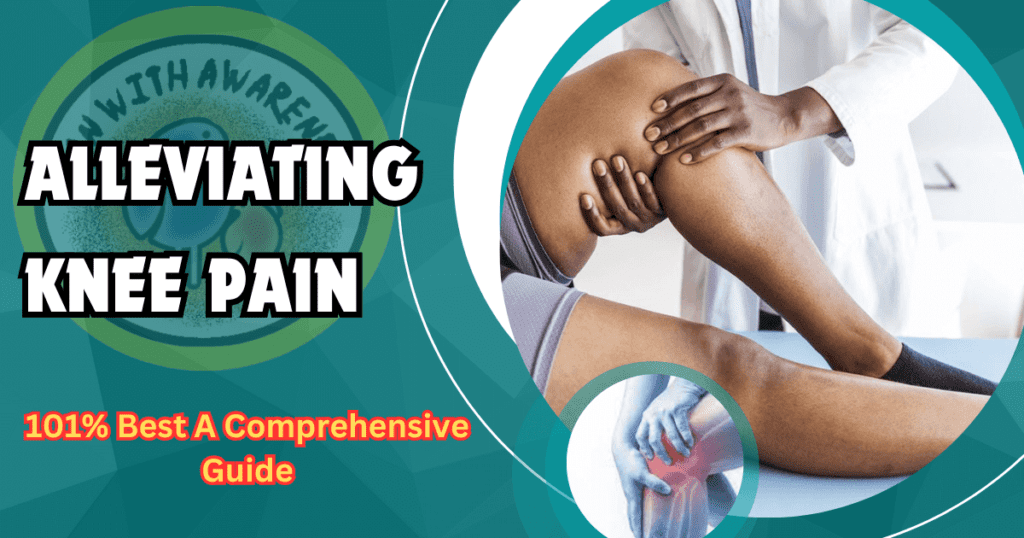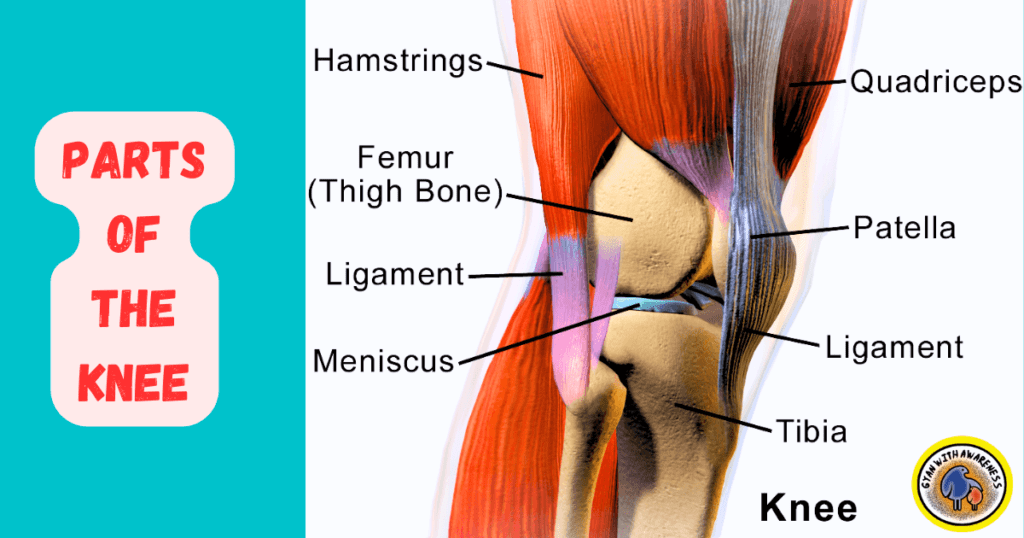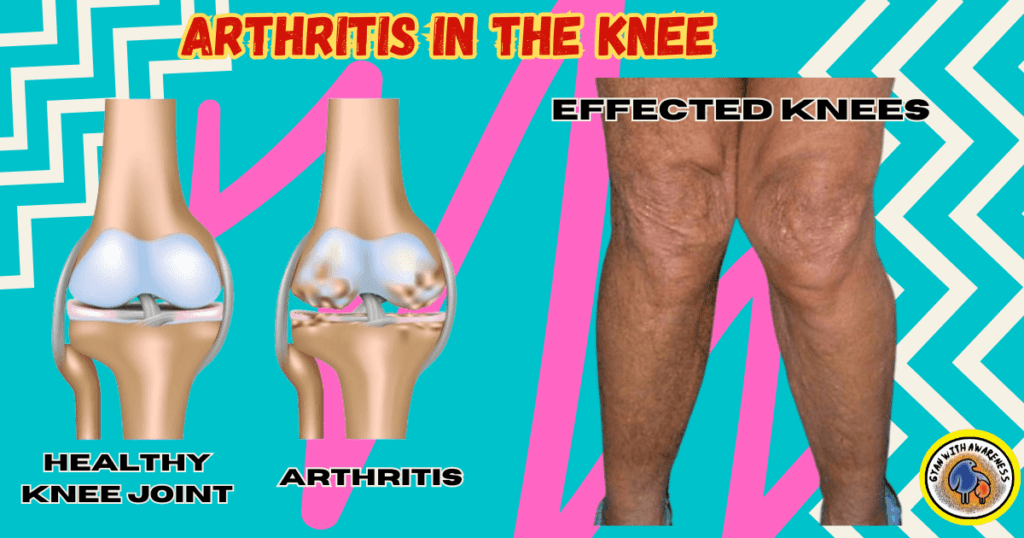A prevalent condition that can affect people of all ages, knee pain can make daily tasks difficult and negatively influence one’s overall quality of life. We will examine the origins, signs, and practical treatments for knee pain in this extensive guide. Let’s look at several ways to get better and move again.

Also Read: Best 11 Foods for Pregnant Females: Nourishing Both Mom and Baby
The Benefits of Tofu: Best Diabetes-Friendly Food, Part 12
Diabetes Cure | Best Mediterranean Chickpea Salad | Part 11
Innovative Grilled Salmon Recipes | Diabetes Cure | Part 10
Diabetes Cure | Delicious Barley Vegetable Soup | Part 9
Delicious Gooseberry Chutney | Diabetes Cure | Part 8
Exquisite Lentil Salad | Diabetes Cure Recipes | Part 7
Best Diabetes Cure | Grilled Fish Recipes | Part 6
Best Diabetes Cure | Brazil Nuts Recipes | Part 5
Best Diabetes Cure | Greek Yogurt Smoothie Recipes | Part 4
Best Diabetes Cure | Greek Salad Recipe | Part 3
Powerful Diabetes Cure Recipes | Detox Island Green Smoothie | Part 2
Best Diabetes Cure | Curd Rice Recipe | Part 1
Exposing the Fundamental Causes of Knee Pain
It’s critical to comprehend the underlying causes of knee discomfort. To shed light on the intricacies of this discomfort, we’ll talk about typical reasons including overuse, arthritis, and injuries.
Parts of the knee:
The knee is a complicated joint made up of cartilage, tendons, ligaments, and bones. It is essential to comprehend the many components of the knee to identify and treat problems with this joint. The following are the main parts of the knee:

Femur: The femur, often known as the thigh bone, is the top bone in the leg. The top portion of the joint is formed by its connection to the knee joint.
Tibia: Of the two lower leg bones, the tibia, or shinbone, is the bigger one. It is the component of the knee joint that forms the bottom and is essential to weight bearing.
Patella: Often referred to as the kneecap, the patella is a tiny, flat, triangular bone that rests in front of the knee. It safeguards and preserves the stability of the joint.
Cartilage: The patella, tibia, and femur’s ends are covered in articular cartilage. It works as a cushion, lowering friction between bones, and giving joints a smooth surface to move on.
Meniscus: Between the femur and the tibia are two wedge-shaped sections of cartilage called menisci. They disperse weight, reduce shock, and improve joint stability.
Ligaments: Connecting one bone to another are strong bands of tissue called ligaments. There are four major ligaments in the knee: the medial collateral ligament (MCL), lateral collateral ligament (LCL), posterior cruciate ligament (PCL), and anterior cruciate ligament (ACL). These ligaments give the knee joint stability.
Tendons: The fibrous fibers known as tendons attach muscles to bones. The patella and tibia are connected by the patellar tendon, whereas the quadriceps tendon joins the quadriceps muscles to the patella.
Synovium: The smooth, thin membrane that lines the inside of the joint is called the synovium. Synovial fluid, which produces and nourishes the joint, lubricates.
Knee joint:
The knee joint, a remarkable hinge joint in the human body, serves as a crucial nexus for movement and weight-bearing activities. Composed of the femur, tibia, and patella, it allows seamless flexion and extension, facilitating essential actions like walking and running. The articulating surfaces are coated with articular cartilage, ensuring smooth motion and minimizing friction. Ligaments, including the ACL and PCL, provide stability, while the menisci act as shock absorbers. Tendons connect muscles, enhancing joint function. This intricate combination of bones, cartilage, ligaments, and tendons harmonizes to create a dynamic knee joint essential for our daily activities and overall mobility.
Identifying the Different Types of Knee Pain
Knee pain isn’t a one-size-fits-all condition. We’ll explore the various types of knee pain, from acute injuries like sprains to chronic conditions such as osteoarthritis. Each type requires a tailored approach to management.
Symptoms: Interpreting the Indications from Your Knee
Effective treatment begins with identifying the symptoms. We’ll dissect the clues your knees might be giving you, enabling you to distinguish between ordinary discomfort and a more significant problem.
Getting Professional Assistance: When to See a Physician
It’s critical to understand when to seek medical counsel. We’ll go over the warning signs that point to the need for a medical consultation so that prompt action may be taken to stop further problems.
Home Remedies for Immediate Relief
Discover practical and accessible home remedies to alleviate knee pain. From hot and cold therapy to simple exercises, we’ll provide actionable tips that you can incorporate into your daily routine.
The Benefits of Exercise for Knee Strengthening
One effective method for treating and avoiding knee discomfort is exercise. We’ll look at specific exercises that build up the muscles surrounding the knee joint, which helps to reduce pain and increase stability.
Nutrition and Diet: Fueling Your Joints
Diet is a major factor in joint health. Find out which foods promote strong, healthy knees and which eating habits can aggravate discomfort and inflammation.
Changing Your Lifestyle to Protect Your Knees
Modest lifestyle adjustments might have a big effect. We’ll talk about lifestyle modifications that can support knee health over the long term, such as ergonomic considerations and appropriate footwear selections.
Holistic Approaches to Managing Chronic Knee Pain
For those dealing with chronic knee pain, holistic approaches can provide relief. Explore alternative therapies such as acupuncture, massage, and mindfulness techniques that complement conventional treatments.
Over-the-counter and Prescription Medications
Sometimes, medications are necessary for effective pain management. We’ll guide you through common over-the-counter options and prescription medications, emphasizing the importance of responsible usage.
Surgical Interventions: Understanding Your Options
In severe cases, surgical interventions may be recommended. We’ll explore different surgical procedures, their benefits, and the recovery process, providing a comprehensive overview for those considering this route.
Preventive Measures for Long-Term Knee Health
Prevention is always better than cure. We’ll outline proactive measures to safeguard your knees, whether you’ve experienced knee pain in the past or want to minimize the risk of future issues.
Real-Life Success Stories: Overcoming Knee Pain
Gain inspiration from real people who have successfully overcome knee pain. Their stories will highlight resilience, determination, and the various paths to recovery.
Knee ligaments:
Although knee ligaments are essential to the stability and functionality of our lower limbs, their importance is frequently overlooked until pain develops. These strong bands of connective tissue provide for easy mobility and support, but strains or injuries can compromise their integrity, causing pain and decreased range of motion. We’ll explore the topic of knee ligaments in this enlightening tutorial, including its significance, typical injuries, and practical preventative and healing techniques. Come along on a journey to discover the fundamentals of the structural support provided by your knee and equip yourself with the knowledge to live a robust and pain-free future.
Arthritis in the knee:
Millions of people worldwide are affected by the common and frequently incapacitating ailment known as knee arthritis. The most prevalent causes of this inflammatory joint disease that affects the knee joint are osteoarthritis and rheumatoid arthritis, though it can take many different forms. Knee arthritis is a condition marked by pain, swelling, and limited range of motion that significantly affects everyday activities and overall quality of life. Over time, wear and tear on the knee’s protecting cartilage may cause bones to rub against one another, resulting in pain and inflammation. This in-depth book will take you deep into the complex world of knee arthritis, examining its various forms, symptoms, risk factors, and practical pain management and relief techniques.

We navigate through the complexities of arthritis, aiming to empower individuals with the knowledge to better understand, cope with, and effectively address this prevalent and impactful joint condition.
Back of knee pain:
Back knee pain can be a confusing and uncomfortable problem that interferes with daily activities and range of motion. For effective alleviation, this localized pain—which frequently results from ailments like tendinitis, popliteal cysts, or muscular strains—needs to be understood. We will dissect the nuances of back-of-the-knee pain in this extensive guide, investigating a variety of potential causes and offering workable remedies. Come explore the subtleties of this particular pain, to equip you with knowledge and techniques to manage and reduce discomfort and enable a more relaxed and unrestricted range of motion.
Back of knee pain bending:
Experiencing pain at the back of the knee during bending is a unique challenge that can disrupt daily activities and limit flexibility. This targeted discomfort, often associated with conditions like popliteal cysts, meniscus tears, or hamstring injuries, requires a focused approach for effective relief. In this comprehensive guide, we will delve into the intricacies of back-of-the-knee pain during bending, shedding light on its various causes and providing practical solutions. Join us as we explore the nuances of this specific issue, aiming to empower you with the knowledge to address and alleviate pain, enabling a more comfortable and unrestricted range of motion.
Back of knee pain walking:
Walking should be easy and painless, but when you have pain behind your knee, it can become a difficult experience. For effective alleviation, this localized discomfort—which frequently results from diseases like tendinitis, bursitis, or nerve impingement—needs to be understood. We will examine the various reasons for walking-related back-of-the-knee pain in this extensive guide, along with some workable remedies. Come along as we explore the subtleties of this particular problem, to arm you with the knowledge you need to manage and reduce discomfort so that you may walk more comfortably and joyfully.
Pain behind the knee:
Behind-the-knee pain can be a mysterious discomfort that disrupts daily activities and mobility. This targeted pain, often arising from various causes such as muscle strains, tendinitis, or Baker’s cysts, demands focused attention. Understanding the specific triggers and learning effective methods to alleviate pain in the knee is crucial for regaining comfort and flexibility. In this guide, we delve into the intricacies of this unique pain, offering insights, practical remedies, and a roadmap to relief. Join us as we explore the nuanced world of behind-the-knee pain, aiming to empower you with knowledge for a pain-free and more mobile life.
Pain behind the knee when bending:
Pain behind the knee when bending can be a restrictive and uncomfortable situation that limits everyday activities and reduces the range of motion. For this type of localized discomfort, which is frequently brought on by injuries to the hamstrings, arthritis, or meniscus tears, a customized treatment plan is necessary. We shall dissect the intricacies of knee pain when bending in this extensive guide, illuminating its numerous causes and offering workable remedies. Come along as we delve into the subtleties of this particular pain, to provide you with the knowledge necessary to manage and reduce it so that you may move more comfortably and freely.
Hamstring pain behind the knee:
Hamstring pain behind the knee can be a persistent and restricting issue, significantly impacting daily activities and mobility. This localized discomfort, often stemming from overuse, muscle imbalances, or injuries, requires targeted attention for effective relief. In this comprehensive guide, we’ll unravel the intricacies of hamstring pain behind the knee, exploring its diverse causes and offering practical solutions. From understanding the anatomy involved to implementing tailored exercises and rehabilitation techniques, join us on a journey to alleviate hamstring-related knee pain. Empower yourself with insights to foster healing, regain flexibility, and experience life with reduced discomfort.
Reduce knee pain:
Knee pain can be a formidable foe, disrupting daily life and hindering mobility. Whether you’re grappling with discomfort due to an injury, arthritis, or overuse, finding effective relief is paramount. In this guide, we’ll navigate the intricacies of reducing knee pain, offering insights into its diverse causes and unveiling practical solutions. From home remedies and exercises to lifestyle modifications and professional interventions, join us on a journey to alleviate knee pain and regain control of your well-being. Embrace a life with fewer limitations as we explore the path to healthier, pain-free knees.
In summary, treating and comprehending knee pain necessitates a multimodal strategy. This article offers a road map for better knee health, from determining the underlying causes to putting preventive measures in place. To guarantee a pain-free and active future, take preventative measures now.
FAQ:
Q1: How common is knee pain, and who is most susceptible?
Knee pain is prevalent across all age groups, but certain factors like age, weight, and prior injuries can increase susceptibility.
Q2: Can knee pain be prevented through exercise alone?
While exercise is a crucial preventive measure, a holistic approach including diet and lifestyle modifications is essential for comprehensive knee health.
Q3: Are there natural supplements that can help manage knee pain?
Yes, certain supplements like glucosamine and omega-3 fatty acids have shown promise in managing knee pain and supporting joint health.
Q4: Does knee pain always indicate a major illness?
No, not always. Acute knee pain is frequently caused by overuse or small, potentially non-serious injuries, but chronic discomfort should still be investigated.
Q5: After knee surgery, how long does recuperation take?
The length of time it takes to recover from surgery varies. Recovery after surgery depends on physical therapy and following post-operative care guidelines.
Q6: Can a swollen knee be dangerous?
Yes, a swollen knee can potentially be dangerous, and it often signals an underlying issue that requires attention. While not all cases of knee swelling are immediately dangerous, persistent or severe swelling can indicate various conditions that may lead to complications. Some potential causes of a swollen knee include:
Injury: Trauma or injury to the knee, such as a sprain or strain, can result in swelling. While not inherently dangerous, severe injuries may require medical intervention.
Arthritis: Conditions like osteoarthritis or rheumatoid arthritis can cause chronic inflammation and swelling in the knee, potentially leading to joint damage over time.
Infection: If left untreated, infections in the tissues around the knee joint or joint itself can result in serious swelling and even be dangerous.
Gout: Because uric acid crystals build up in the joint, gout is a kind of arthritis that can cause abrupt, severe swelling.
Blood Clot: Deep vein thrombosis (DVT), an uncommon type of blood clot in the leg, can cause swelling and be dangerous if it moves to the lungs.
If your knee swelling is significant or chronic, you should see a doctor, especially if it is accompanied by discomfort, redness, warmth, or trouble moving the joint. To determine the underlying cause and choose the best course of action, prompt medical attention can help lower the risk of potential complications.
Also Read: Best 11 Foods for Pregnant Females: Nourishing Both Mom and Baby
The Benefits of Tofu: Best Diabetes-Friendly Food, Part 12
Diabetes Cure | Best Mediterranean Chickpea Salad | Part 11
Innovative Grilled Salmon Recipes | Diabetes Cure | Part 10
Diabetes Cure | Delicious Barley Vegetable Soup | Part 9
Delicious Gooseberry Chutney | Diabetes Cure | Part 8
Exquisite Lentil Salad | Diabetes Cure Recipes | Part 7
Best Diabetes Cure | Grilled Fish Recipes | Part 6
Best Diabetes Cure | Brazil Nuts Recipes | Part 5
Best Diabetes Cure | Greek Yogurt Smoothie Recipes | Part 4
Best Diabetes Cure | Greek Salad Recipe | Part 3
Powerful Diabetes Cure Recipes | Detox Island Green Smoothie | Part 2